As Bengaluru gears up to bid farewell to 2024 and welcome 2025, the city police have unveiled comprehensive safety and traffic measures to ensure smooth and secure celebrations across the city. Anticipating large crowds, especially in key areas like MG Road, Brigade Road, Koramangala, and Indiranagar, extensive arrangements have been put in place.
Security Deployment Across the City
A total of 11,830 police personnel, including senior officers, civil defense staff, and volunteers, will be deployed citywide to monitor and manage the celebratory crowds. Special attention will be given to preventing drug-related activities and unauthorized rave parties.
Celebration Timings and Guidelines
City Police Commissioner B Dayananda, in a press briefing, emphasized that New Year celebrations are permitted only until 1 AM. Authorities have also issued guidelines prohibiting face masks in crowded areas to avoid identity concealment.
Traffic and Pedestrian Arrangements
To prevent overcrowding and potential stampede-like situations:
- A one-way pedestrian movement system will be enforced on MG Road and Brigade Road.
- Ola and Uber pickup points have been strategically allocated to avoid traffic bottlenecks.
Vehicular movement will be restricted in hotspots, and pickets will be placed near malls, party hubs, and high-traffic zones.
Focus on Women’s Safety
‘Safety Islands’ manned by women police officers have been established at key junctions. Police kiosks will also offer immediate assistance for issues such as missing persons or theft complaints.
Central Division Deployment
In the Central Division, covering MG Road, Brigade Road, Opera Junction, and Residency Road, 2,572 officers, including five DCPs, 18 ACPs, and 41 inspectors, will be actively monitoring the situation.
The Bengaluru Police urge citizens to cooperate with security personnel, adhere to safety guidelines, and celebrate responsibly to ensure a safe and joyous start to 2025.


















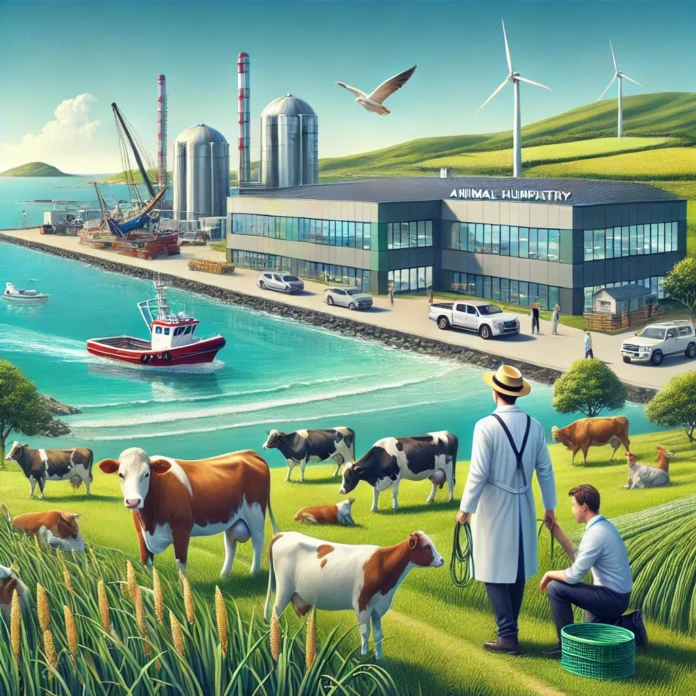
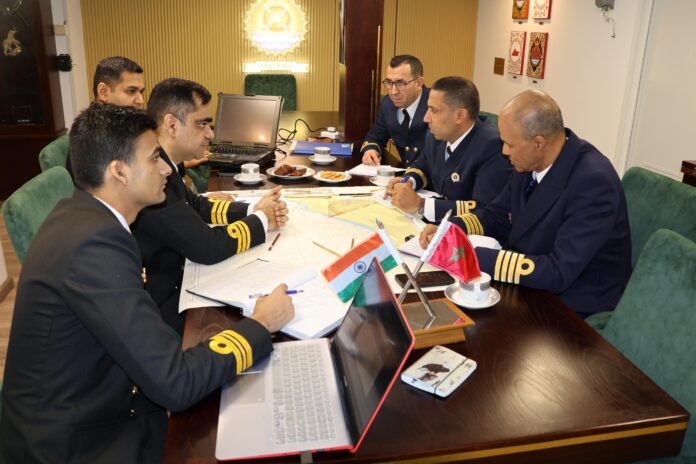
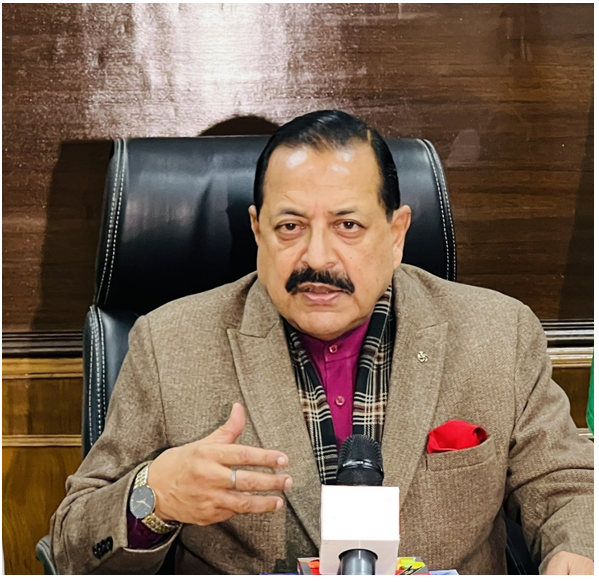
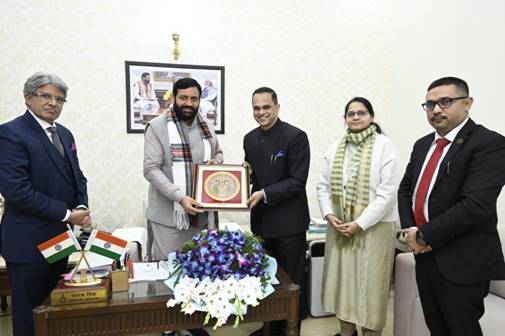
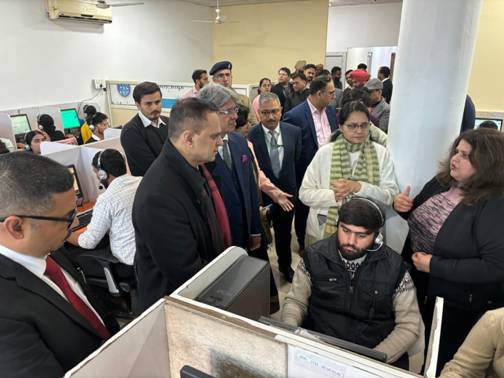 During the visit, the delegation observed seamless service delivery mechanisms and participated in live citizen interactions via video conferencing. The session highlighted the Commission’s focus on real-time grievance resolution through collaboration with senior officials and end-to-end digitization of processes.
During the visit, the delegation observed seamless service delivery mechanisms and participated in live citizen interactions via video conferencing. The session highlighted the Commission’s focus on real-time grievance resolution through collaboration with senior officials and end-to-end digitization of processes.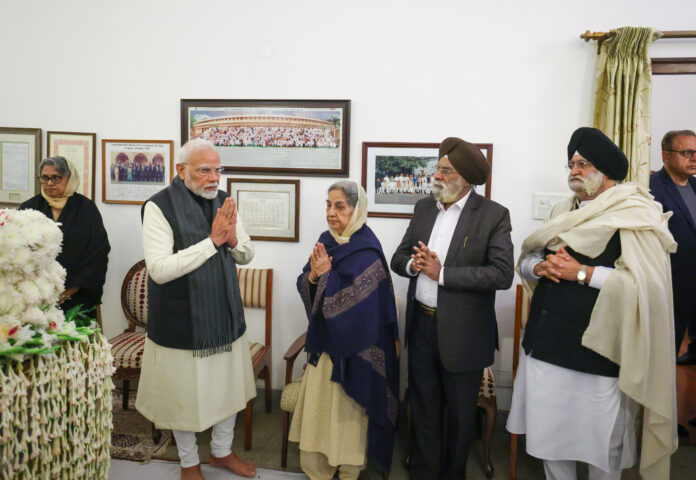
 As a mark of respect, the Government has declared a seven-day state mourning period until January 1, 2025. During this period, the National Flag will fly at half-mast across Bharat and in all Indian Missions and High Commissions abroad. Dr. Manmohan Singh will be accorded a State Funeral, and a half-day holiday will be observed in all Central Government offices and CPSUs on the day of the funeral.
As a mark of respect, the Government has declared a seven-day state mourning period until January 1, 2025. During this period, the National Flag will fly at half-mast across Bharat and in all Indian Missions and High Commissions abroad. Dr. Manmohan Singh will be accorded a State Funeral, and a half-day holiday will be observed in all Central Government offices and CPSUs on the day of the funeral.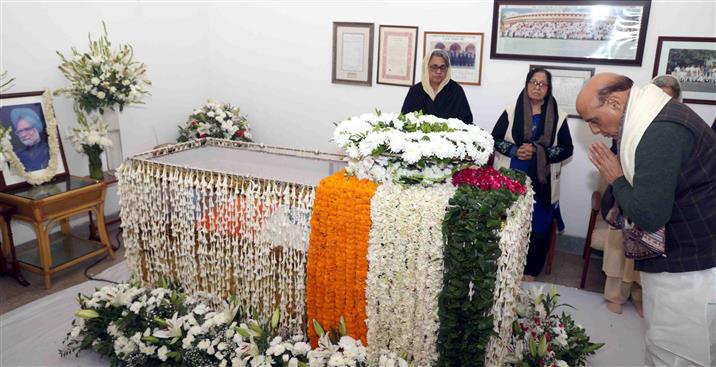 Born on September 26, 1932, in Gah village (now in Pakistan), Dr. Manmohan Singh had an illustrious academic journey. He earned his Master’s degree in Economics from Panjab University in 1954, followed by a Tripos in Economics from the University of Cambridge in 1957 with First Class Honours. In 1962, he received a D.Phil from the University of Oxford.
Born on September 26, 1932, in Gah village (now in Pakistan), Dr. Manmohan Singh had an illustrious academic journey. He earned his Master’s degree in Economics from Panjab University in 1954, followed by a Tripos in Economics from the University of Cambridge in 1957 with First Class Honours. In 1962, he received a D.Phil from the University of Oxford.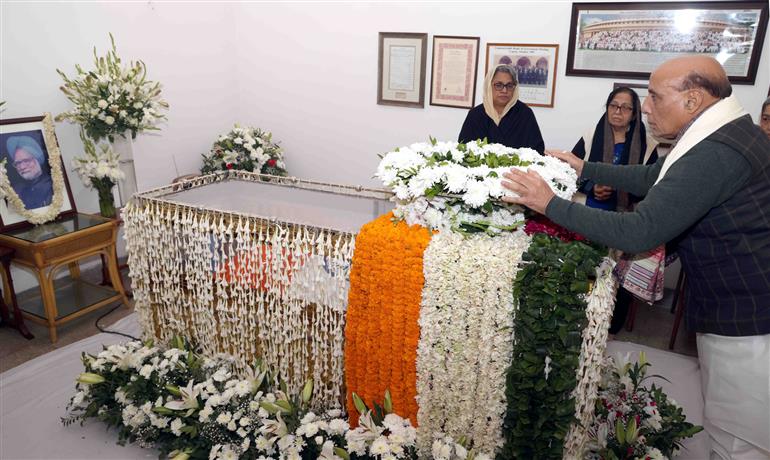 He was honored with prestigious awards, including the Padma Vibhushan (1987), Jawaharlal Nehru Birth Centenary Award (1995), and the Adam Smith Prize (1956).
He was honored with prestigious awards, including the Padma Vibhushan (1987), Jawaharlal Nehru Birth Centenary Award (1995), and the Adam Smith Prize (1956).

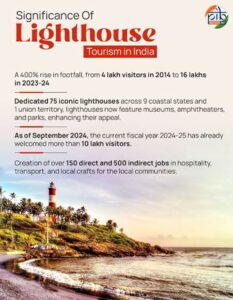
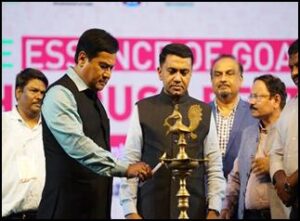


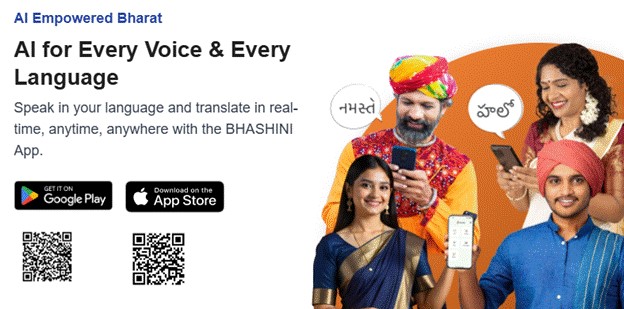
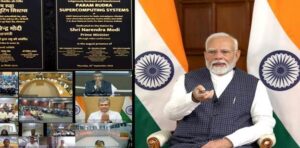
 Key Achievements in 2024
Key Achievements in 2024
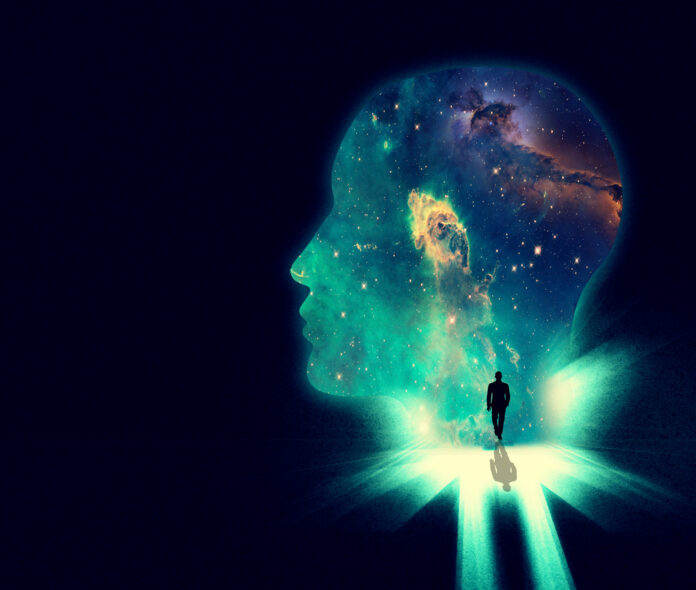

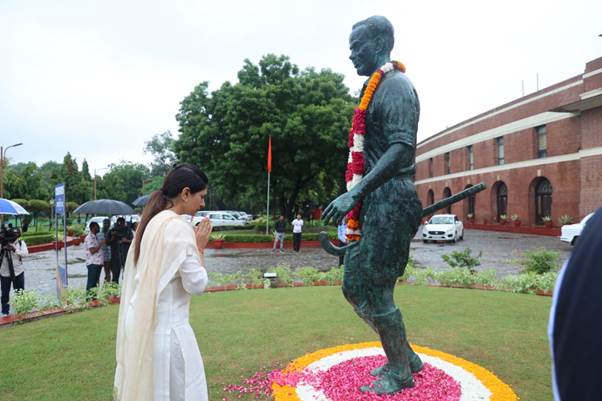
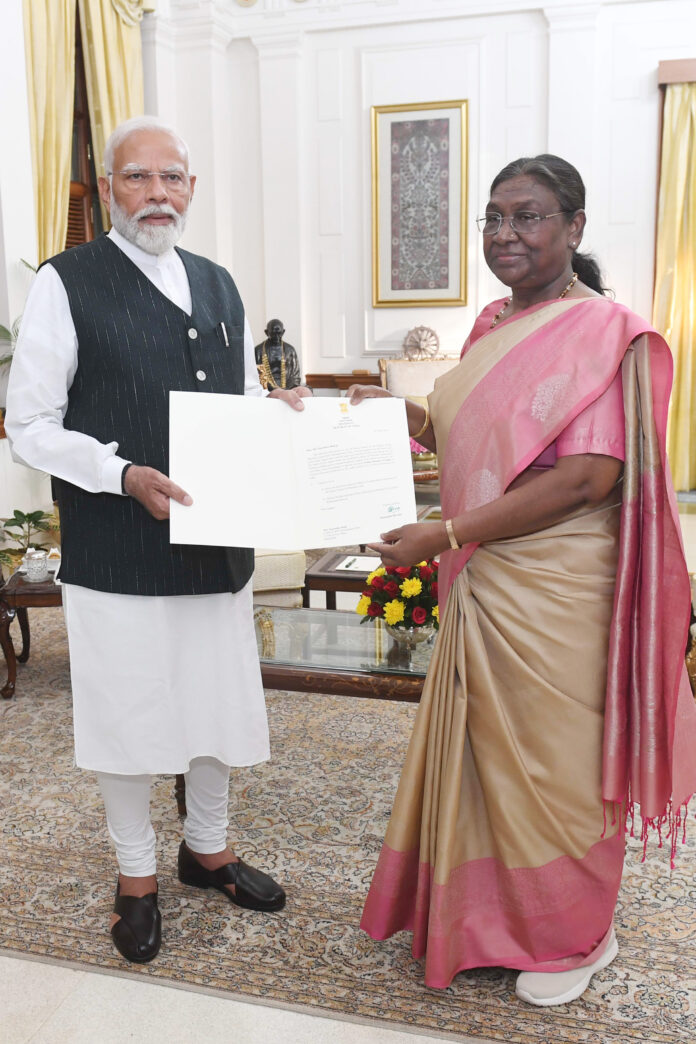
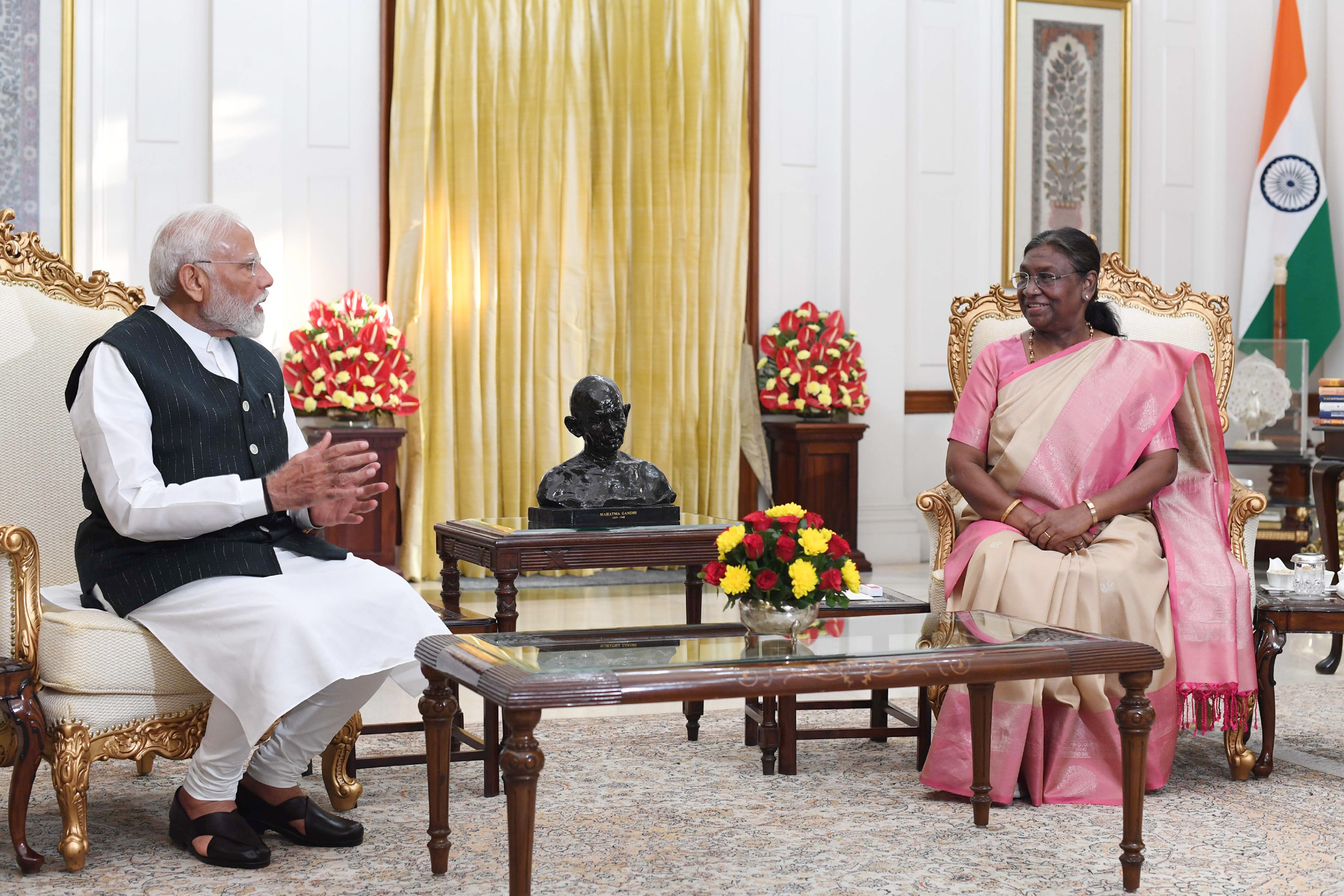 The delegation included senior BJP leaders Shri Rajnath Singh, Shri Amit Shah, Shri Ashwini Vaishnaw, and Dr. C.N. Manjunath, as well as prominent leaders from allied parties such as Shri N. Chandrababu Naidu (Telugu Desam Party), Shri Nitish Kumar and Shri Rajiv Ranjan Singh (Janata Dal (United)), Shri Eknath Shinde (Shiv Sena), Shri H.D. Kumaraswamy (Janata Dal (Secular)), Shri Chirag Paswan (Lok Janshakti Party (Ram Vilas)), and several others.
The delegation included senior BJP leaders Shri Rajnath Singh, Shri Amit Shah, Shri Ashwini Vaishnaw, and Dr. C.N. Manjunath, as well as prominent leaders from allied parties such as Shri N. Chandrababu Naidu (Telugu Desam Party), Shri Nitish Kumar and Shri Rajiv Ranjan Singh (Janata Dal (United)), Shri Eknath Shinde (Shiv Sena), Shri H.D. Kumaraswamy (Janata Dal (Secular)), Shri Chirag Paswan (Lok Janshakti Party (Ram Vilas)), and several others. Upon reviewing the letters of support, the President confirmed that the BJP-led NDA alliance, the largest pre-election coalition, holds the majority support in the newly constituted 18th Lok Sabha, thus ensuring a stable government formation. Exercising her authority under Article 75(1) of the Constitution of India, the President appointed Shri Narendra Modi as the Prime Minister of India.
Upon reviewing the letters of support, the President confirmed that the BJP-led NDA alliance, the largest pre-election coalition, holds the majority support in the newly constituted 18th Lok Sabha, thus ensuring a stable government formation. Exercising her authority under Article 75(1) of the Constitution of India, the President appointed Shri Narendra Modi as the Prime Minister of India.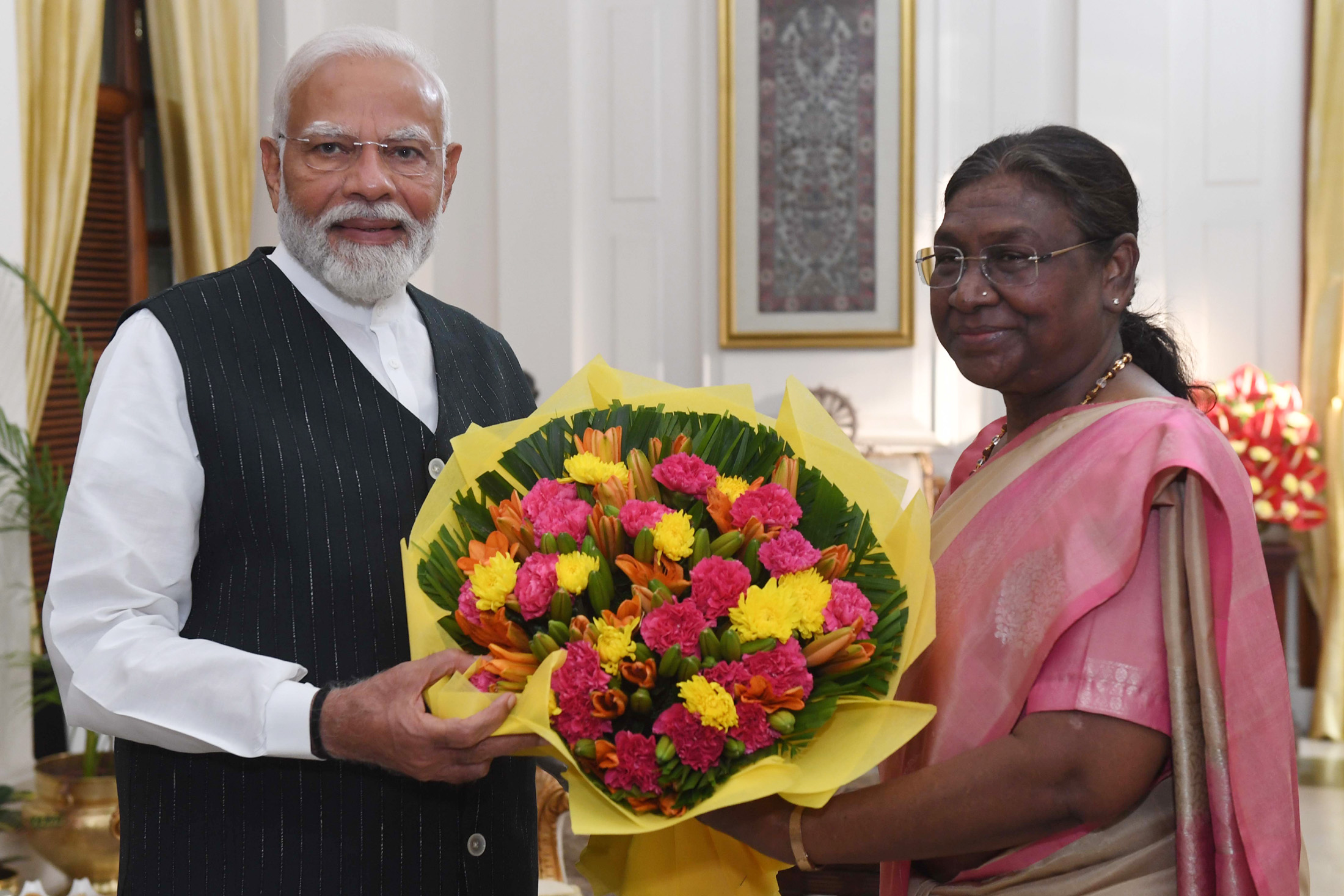 The President has requested Prime Minister Narendra Modi to propose the date and time for the swearing-in ceremony at Rashtrapati Bhavan and to provide the list of individuals to be appointed as members of the Union Council of Ministers.
The President has requested Prime Minister Narendra Modi to propose the date and time for the swearing-in ceremony at Rashtrapati Bhavan and to provide the list of individuals to be appointed as members of the Union Council of Ministers.